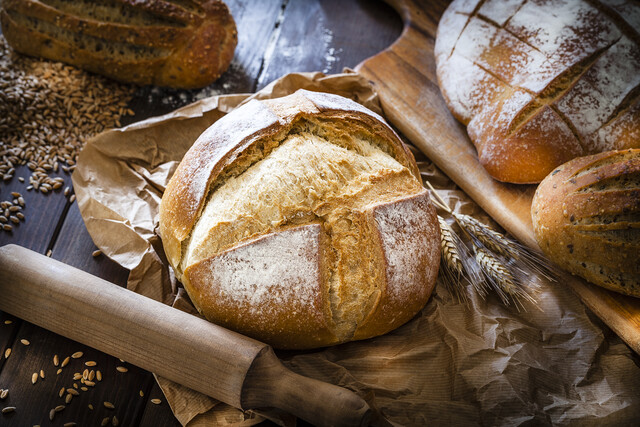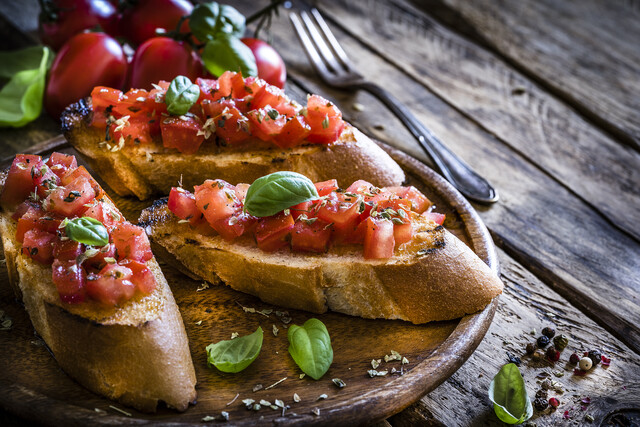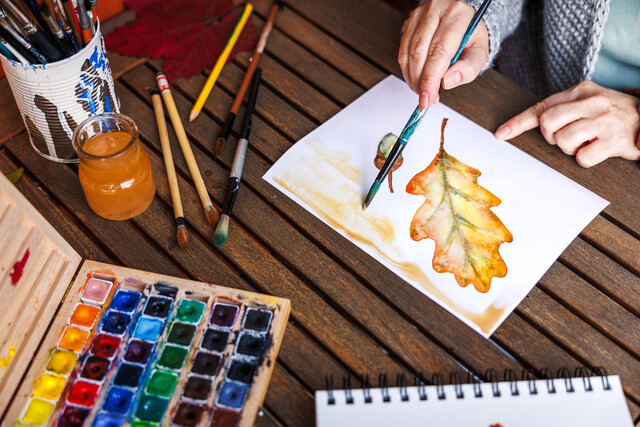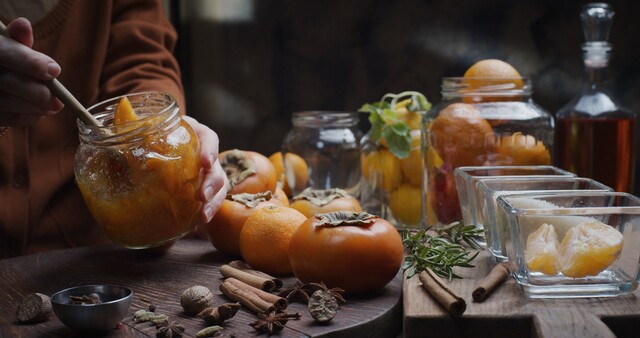The simple words "tea party" can conjure a variety of different mental images: Alice in Wonderland, Teddy Bear Tea, a bunch of older women in floral dresses wearing gloves�each person probably has a different idea of what a tea party is, which is one of the great benefits of hosting a tea party: you can adapt it to suit any type of crowd, any budget, and any tastes.
This article will provide an introduction to the vast array of teas, the history of tea and tea parties, and the surprising social and political impact of this simple beverage. It will also provide tips for planning your own tea party, including food suggestions, tea-pairing ideas, and tips for tailoring your event to the intended audience and budget.
Tea parties generally happen in between meals. The most common time frame is between 3-5 pm, but there's no reason you couldn't have a brunch tea or a dinner tea. In fact, the tradition known as "high tea" is actually just a simple dinner that was once common of miners and factory workers when they came home at the end of the day.
The menu at your tea party can include simple scones and sweets, or you can get creative with finger sandwiches and quiches, or even serve a full, simple meal--depending on the occasion, time of day, and how hungry your guests are likely to be.
Tea parties are often stereotyped as women's events, but there is no reason men can't attend or host a tea party. However, if you do host a mixed-company tea party, it is probably wise to avoid overdosing on frills like lace doilies, chintz chair cushions and finger sandwiches cut in the shape of fluffy bunnies.
Food preparation at a tea party is usually very simple, featuring the kinds of items you can make ahead of time, like sliced fruit, simple sandwiches, cookies and sweets. The food can be served buffet style or passed on plates for a smaller group. Since the foods are small and easy to eat standing or sitting without a table, you don't have to worry about providing a proper table setting for each guest, which allows you to comfortably host a large or small number of people at your tea party.
The scalability and simplicity of this type of party makes it an excellent choice for a wide variety of events from children's parties to bridal and baby showers and engagement parties, as well as birthdays, anniversaries, and even fundraisers. At one time, tea dances were quite popular, and they could still be a great occasion for teens and adults to dress up, practice their dance steps, and enjoy a light meal in the mid-afternoon.
The advantages and disadvantages of tea parties
Tea parties can work with any size crowd and budget. You can have one friend join you for tea at home to catch up on her life story, or you can have 250 people come together for tea and sandwiches at a silent auction fundraiser. You can adjust the budget by changing the types of foods and teas that you serve, and how they are presented. To keep it inexpensive, make your own muffins, scones or cookies and serve with the cups and mugs you already own. If you have a large budget, you can have a caterer prepare all the food, and you can invest in attractive china and table linens.
Tea parties can also be a great excuse to get dressed up. In an age when ties and dresses are, for many of us, a rare item indeed, a tea party is a great time to put on our finery. (We understand that, for some people, this may actually be a disadvantage).
History of Tea
Tea has been around for nearly 5,000 years since it was first discovered in Asia. As for the specific details of who first tried it and when, that momentous occasion was so long ago that precise names and dates have been swallowed up in mythology, but there are two popular tales of the origin of tea. The most common tea legend attributes the discovery to the Chinese Emperor Shen Nong, in 2737 BC. At that time, there were no water treatment plants and water supplies could easily become tainted with disease and bacteria, so the Emperor and his subjects boiled their daily drinking water to kill germs. The legend says that one day, a breeze blew the leaves from a tea plant into the Emperor's boiling water, and the result was an appealing brown brew with a delicious scent. The Emperor tasted the tea and felt immediately refreshed, and so the story of tea began.
Elsewhere in Asia, Indian Buddhists claim that Siddhartha Gautama, a Nepalese prince and the founder of Buddhism was making a pilgrimage to China, and he vowed not to sleep during his journey. Eventually, overcome with exhaustion, Siddhartha's eyelids betrayed him and he fell asleep. When he woke, he was so angry at his eyelids that he ripped them off and threw them to the ground, and instantly two tea bushes sprouted out of the ground from the seeds of his eyelids. Siddhartha immediately consumed some of the tea leaves, felt instantly refreshed, and continued his journey.
Although neither story is a documented fact, the fact that they both attribute the origin of the drink to extremely important people indicates what an important role this drink has played in world history, and in medicine and health. In fact, although tea has been around for many thousands of years, it was used as a medicine for most of that time. In China, teas were used to treat a wide range of disorders from depression to skin disorders.
In its early history, tea plants were rare, which made the leaves expensive to buy and limited its use to the wealthy. As cultivation practices improved, tea became a more common drink throughout Asia. In the 8th century BC, Lu Yu published a book called Ch'a Ching, which was the definitive work on how tea should be cultivated, harvested and brewed. Tea production in China flourished as a result of this book.
Meanwhile, tea had found its way into Japan. In the beginning, Japanese monks used tea as a part of religious ceremonies, to assist with meditation. Over time, the Japanese tea ceremony developed into an art form--this event could take several hours, and learning to be a tea master could take several years--but at its heart, the tea ceremony was about preparing and drinking tea in the most perfect, elegant, polite and relaxing way possible.
Although tea was a staple in Asia by the end of the first millennium AD, the great distance that separated Asia from Europe also kept this beverage mostly in the East, and the little tea that made its way west was so expensive that only the very wealthy could afford even small amounts. In the 1600s, when Queen Elizabeth of England began to encourage more trade with the far east, and as ships could complete the voyage from Asia to England much faster, tea consumption climbed in Europe, but it still had the stamp of luxury, and the drink was popular among royalty and nobles.
It was in the early 1800s when the origins of tea parties began in England. At that time in Britain, people usually ate two large meals a day: breakfast and dinner, leaving a long gap in between. As with the beginning of tea itself, tea parties are shrouded in myth, but the prevailing legend says that Anna, the 7th Duchess of Bedford, began asking her servants to bring her sandwiches and tea in the mid-afternoon to ward off her late afternoon "sinking feeling." She soon began inviting friends to join her for tea. Before long, other women of the gentry started asking friends over for tea and a walk. At this time, afternoon tea was an intimate gathering of close women friends.
Types of Tea
Once the custom of tea parties spread among the nobility, it became fashionable throughout British society, and different sorts of tea parties evolved. Although we often hear people say "high tea" in a reference to a very fancy affair, it originally referred to tea eaten at a high table, like a dinner table, instead of a low table. The high tea was a simple early dinner eaten after farmers, miners or factory workers came home. Sometimes wealthy families would also enjoy a high tea instead of an elaborate meal for Sunday dinner so their servants could take the day off and the lady of the house could prepare the simple fare for her family. High tea usually involves meat, vegetables, a dessert, and hot tea.
Low tea, on the other hand, was in the mid-afternoon, at a low table (like a coffee table), and it featured pretty sandwiches and treats. Low tea emphasized presentation and conversation, and it was very much the realm of the upper classes.
A "light" tea includes scones and sweets like sponge cakes, cookies and cupcakes. Cream tea refers to a lighter snack with scones, cream and of course, tea. A full tea is more like a small meal, and may include little sandwiches, salads, quiches, and desserts.
Tea gardens, tea rooms and tea dances
Tea parties reached their peak of popularity in Britain during the Victorian era. At that time, upper-class women faced very strict codes of conduct. Teenage girls were usually sequestered away from young men. They went to girls' schools, they socialized with their girl friends, and if a boy wanted to visit a girl, he had to wait until her mother invited him to call. If a girl wanted to spend time with a young man, she would always have to have a chaperone (an adult woman) with her. Any girls who broke these rules put their reputation at stake. It is hard to imagine in today's society where anything goes, but in Victorian times, people with tarnished reputations were treated like social lepers and their dating prospects (and for men, even their business prospects) would be severely affected.
Tea gardens provided one of the few places where men and women could mix socially without scandalous talk, so these little oases boomed in popularity. A tea garden was an outdoor area, similar to a park or patio, where people could sit and enjoy tea while listening to live orchestras or playing games.
As the 1800s drew to a close, tea rooms (indoor spaces where men and women of different classes could come to enjoy tea) grew in popularity in England and America. In the early 20th century, dancing was enjoying a surge in popularity, and people began holding tea dances--where you could enjoy a few dances in the afternoon with tea for refreshment.
Tea in America
Tea was first sold commercially in America in the 1690s. The drink became quite popular, and it actually played a critical role in the American Revolution: colonists enjoyed their tea, and became angry when the British government imposed hefty taxes on it. The 1767 Tea Tax was so unpopular that American colonists refused to buy English tea. The public anger boiled over at the so-called Boston Tea Party, when American colonists dressed as native Americas tossed hundreds of pounds of heavily taxed British tea into Boston Harbor.
Tea retained its popularity in the U.S. after independence. Fine hotels in New York like the Plaza were famous for their afternoon tea. It was also an American, Thomas Sullivan of New York, who began packaging tea samples in tiny silk bags. Sullivan's customers quickly figured out they could brew the leaves right in the bags instead of using loose tea. An Englishman in St. Louis, Missouri, is credited with inventing iced tea. Richard Blechynden, a vendor at the 1904 World's Fair, was trying to give away samples of tea from around the world. But the temperatures were scorching that day, and no one seemed interested in a boiling hot beverage. Blechynden cleverly poured ice into his brewed tea, and a sensation was born that continues to this day.
Tea Today
Tea is as popular as ever, but modern production and shipping practices have made it possible to find a bewildering array of teas just about anywhere in the modern world. Time-honored tearooms like the Plaza hotel still serve afternoon tea, and cozy tearooms have blossomed in big cities and small towns. Specialty teashops are common in quaint towns and suburban shopping malls. Even grocery stores offer a wide range of teas--but if you should live in a remote area with only one small food store that only offers one kind of tea, Internet shopping has made it possible to have formerly rare and exquisite teas delivered straight to your door within a matter of days.
Tea is enjoying a rise in popularity partly because of its perceived health benefits. A standard cup of tea is usually lower in caffeine than regular coffee. It has a mild taste that makes it easier to drink unsweetened (for people who are watching their sugar and calorie intake), it is non-carbonated and 100% natural. Tea also contains antioxidants which help the body fight off damaging environmental factors like cigarette smoke.
























